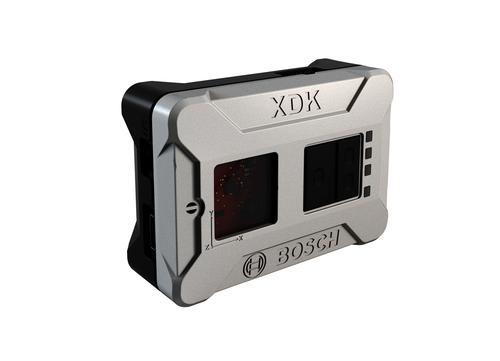Development Kit Speeds Creation of IoT Demos
A new “rapid prototyping tool” enables developers to bring Internet of Things (IoT) designs to life more quickly.
February 1, 2016
The Cross Domain Development Kit, or XDK, as it’s known, is targeted at system integrators and developers who want to quickly create a demo or proof-of-concept for IoT applications. “Too often, the problem is that when you want to do a proof-of-concept, you have to reinvent the wheel,” Thorsten Mueller, CEO of Bosch Connected Devices and Solutions GmbH, told Design News. “We wanted to come up with a solution -- a very generic sensor that would allow you to do a fast proof of concept.”
Bosch’s solution incorporates both hardware and software. The hardware side includes a MEMS accelerometer, magnetometer and gyroscope, as well as humidity, pressure, temperature, acoustic, and digital light sensors. The kit also incorporates Bluetooth and WiFi hardware, a 32-bit ARM Cortex M3 microcontroller, integrated antennas, a micro SD slot card, and a rechargeable lithium-ion battery. The software side includes an integrated development environment, algorithm library, sample applications, and access to an online community for support.

Bosch’s Cross Domain Development Kit (XDK) is targeted at system integrators and developers who want to quickly create a demo or proof-of-concept for IoT applications.
(Source: Bosch)
Bosch, which originally created the XDK for its own internal use, is now targeting the kit at machinery maintenance and goods tracking, as well as smart home and automotive applications.
To simplify the prototyping process, Bosch also includes a small (60 mm x 40 mm x 22 mm) housing that contains the battery and incorporates push buttons and status LEDs. Through it, the XDK can be connected to a PC or mobile device.
[Learn more electronics trends and developments at Pacific Design & Manufacturing, Feb. 9-11, at the Anaheim Convention Center.]
Founded as a subsidiary of Robert Bosch GmbH in 2013, Bosch Connected Devices and Solutions began with the idea that it could simplify the creation of smart, sensor-based products. Its first product was a door and window sensor. “We came up with a radical new concept -– a one-piece sensor device that could detect the status of a door or window,” Mueller told us. “Instead of sending a lot of raw data to the cloud, it does all the pre-processing on the sensor node, and just sends out a change-of-state message.” At the recent CES 2016 show in Las Vegas, the start-up also announced new products for air quality measurement systems and automotive telematics products.
READ MORE EMBEDDED DEVELOPMENT ARTICLES ON DESIGN NEWS:
Bosch claims the XDK goes beyond the reference designs typically offered by semiconductor companies. “A semiconductor company will sell you a reference design and hardware components, but not a ready-to-use sensor,” Mueller said. “With our product, a user can easily design a specific sensor device based on the data they collect with the XDK.”
The idea, he said, is to promote immediate productivity. “When you unbox it as an inexperienced user, you should have your first demo running in 10 minutes,” he told us. “That’s the goal.”
Senior technical editor Chuck Murray has been writing about technology for 31 years. He joined Design News in 1987, and has covered electronics, automation, fluid power, and autos.

About the Author(s)
You May Also Like

.jpg?width=300&auto=webp&quality=80&disable=upscale)

